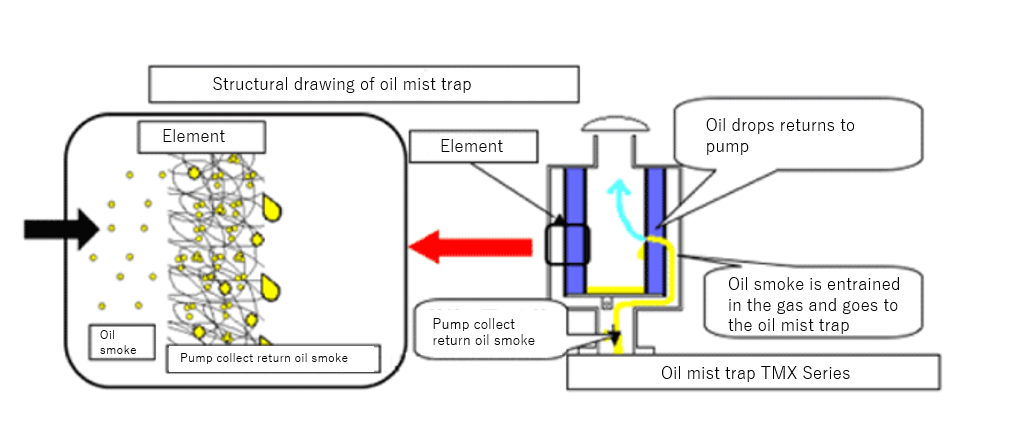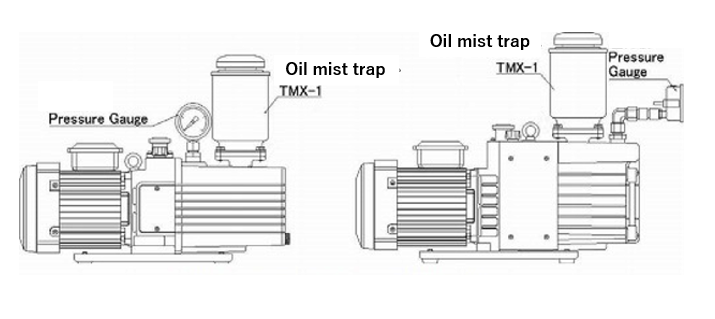Fundamentals of Vacuum Pumps (Low to Medium Vacuum)
What is Oil Mist Trap?
Oil Mist Trap
Why is Oil Mist Trap essential?
An oil rotary pump exhausts oil smoke and oil droplets to the outside during start-up and evacuation presses. ULVAC's oil milt trap, TM, and TMS series let you operate in a clean environment without contaminating the facility and atmosphere.
How Oil Mist Trap Works?
An oil mist trap is a filter. Once installing it to the rotary pump's exhaust port (exit side), it removes approximately 90% of the oil smoke in the exhausted air. The filter collects the oil smoke, restores it to the original oil, and returns it to the oil tank in the pump.

Basically, the oil mist traps and the vacuum pumps structures are not designed to withstand pressure. When the filter element inside the oil mist trap is clogged in operation, the internal pressure may increase, and the oil mist trap may burst--the oil oxidation clogs the filter element. Also, solid matter and the gasses promoting the deterioration of the pump oil are sucked, clogging occurs more frequently. The key to use in safe is controlling the internal pressure 0.03 MPa(G) or less in the oil mist trap.
If you are worried about pressure control, pressure gages will help and easily control the performance.

Figure 1: Pressure Gauge Installed in Oil Tank.
Fundamentals of Vacuum Pumps (Low to Medium Vacuum)
HOW TO
- Vacuum Tech Basics
- Fundamentals of Vacuum Pumps (Low to Medium Vacuum)
- Fundamentals of Vacuum Pumps (High Vacuum)
- Fundamentals of Vacuum Valves
- Fundamentals of Vacuum Gauges
- Fundamentals of Quartz Crystal Oscillation Type Deposition Controller
- Fundamentals of Leak Detection
- Fundamentals of High-Speed Spectroscopic Ellipsometer
- Fundamentals of Gas Analyzer (Process Gas Monitor)
- The Others
- How to Choose The Best Products
- Old Models vs. New Models
- Troubleshooting